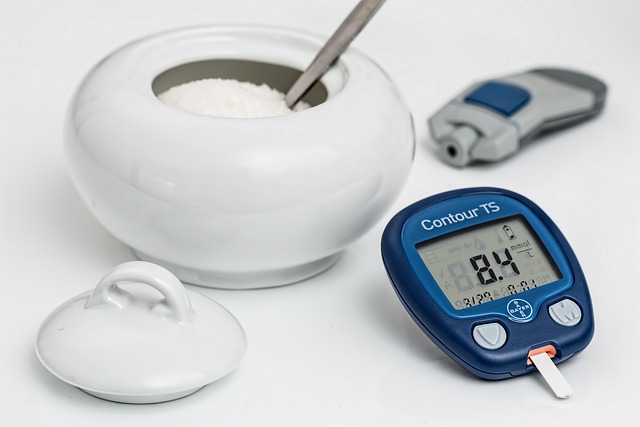Iron deficiency anemia, a common blood disorder, can be effectively diagnosed using the UK Standard Liver Blood Test (LBT), which measures hemoglobin and iron-related markers. Symptoms like fatigue, weakness, and shortness of breath indicate potential issues, while the LBT detects anomalies in liver enzymes and bilirubin levels associated with iron deficiency. Healthcare providers use test results to guide personalized treatment, including dietary changes, supplements, or IV iron therapy, regularly monitoring progress through subsequent LBTs for comprehensive anemia management.
Iron deficiency anemia is a common yet serious condition affecting millions globally. It arises from inadequate iron levels, crucial for red blood cell production. This article delves into the detection of this condition through blood tests, focusing on the UK Standard Liver Blood Test (SLBT) as a key diagnostic tool. We explore its role in identifying iron deficiency anemia, interpreting results, and available treatment options, empowering individuals to recognize and manage their health effectively.
- Understanding Iron Deficiency Anemia and its Symptoms
- The Role of UK Standard Liver Blood Test in Diagnosis
- Interpreting Results and Treatment Options
Understanding Iron Deficiency Anemia and its Symptoms
Iron deficiency anemia is a common blood disorder where the body lacks enough healthy red blood cells to carry adequate oxygen to the body’s tissues. This condition arises when there’s a decrease in iron, a key component of hemoglobin, the protein in red blood cells that transports oxygen. Symptoms may include fatigue, weakness, pale skin, shortness of breath, dizziness, and headaches. In severe cases, individuals might experience irregular heartbeat or chest pain.
A UK Standard Liver Blood Test is often used to diagnose this condition. This test measures the levels of various substances in the blood, including hemoglobin (Hb), which indicates red blood cell health. Low Hb levels can suggest anemia, prompting further investigation to identify its cause. Iron deficiency is one of the most common types of anemia, and early detection through simple blood tests can lead to effective treatment options like dietary changes or supplementation to restore iron levels and improve overall health.
The Role of UK Standard Liver Blood Test in Diagnosis
The UK Standard Liver Blood Test plays a crucial role in diagnosing iron deficiency anemia, offering valuable insights into overall liver health and potential nutritional deficiencies. This comprehensive test assesses various liver enzymes, proteins, and bilirubin levels, which can indicate the presence or severity of anemia. Elevated levels of certain enzymes like alanine aminotransferase (ALT) or aspartate aminotransferase (AST) may suggest liver damage or inflammation, often linked to iron deficiency.
By analyzing these markers, healthcare professionals can identify not only iron deficiency but also its impact on liver function. The test serves as a reliable tool for monitoring treatment effectiveness and managing anemia, ensuring individuals receive appropriate nutritional interventions to improve both their blood health and overall well-being.
Interpreting Results and Treatment Options
Interpretation of results is a crucial step in diagnosing iron deficiency anemia. Your healthcare provider will analyze your blood sample, looking at levels of hemoglobin and red blood cells, as well as iron, ferritin, and transferrin saturation. A UK Standard Liver Blood Test (LBT) often includes these measurements, offering valuable insights into your overall health and anemia status. If the test results indicate low iron levels or specific abnormalities, further evaluation may be necessary to confirm anemia.
Treatment options for iron deficiency anemia typically involve addressing the underlying cause and replenishing iron stores. This can include dietary changes, such as incorporating iron-rich foods, taking oral supplements, or in severe cases, receiving intravenous (IV) iron therapy. Your healthcare provider will tailor the treatment plan to your needs, considering factors like the severity of anemia, any underlying conditions, and personal health history. Regular monitoring through blood tests is essential to track progress and ensure effective management of the condition.
Iron deficiency anemia, often overlooked, can be effectively detected through simple blood tests, such as the UK Standard Liver Blood Test. By understanding its symptoms and interpreting test results accurately, healthcare professionals can promptly initiate treatment, ensuring optimal health outcomes. This standard liver blood test plays a crucial role in identifying iron deficiency anemia, enabling effective management and revolutionizing diagnosis in today’s medical practices.
